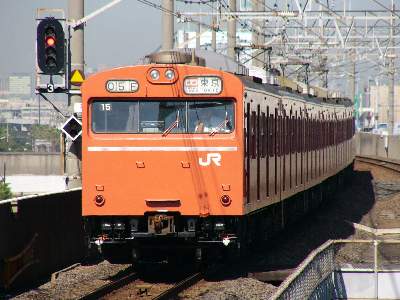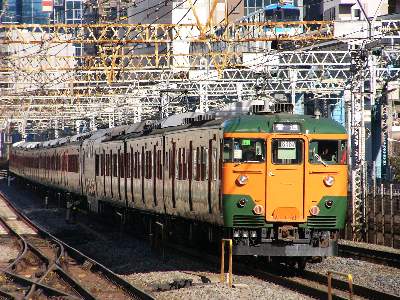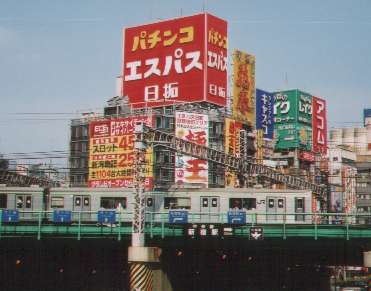CITY RAILWAYS IN TOKYO, OSAKA and NAGOYA


|
Type 103, the most common city trains in former JNR era before 1986, built more than 3,000 cars.
|
Morning rush hour in JR Keiyo Line.
As many as 300 or 400 passengers get on one carriage.
|

|

|
Type 211, running as middle distance suburban local train.
|
Type 113 with long 15 car set running Tokaido Line.
|

|

|
Type 205 Yamanote Line train running through busy commercial area in Shinjuku.
|
Type 205 Keiyo line train with purple color.
In Tokyo urban area, line color is decided to make train's destination clear.
|

|

|
Type 231 Yamanote Line train with green color, which is the latest commuter train
in JR Tokyo urban area.
|
|
Type 231 yellow version runs in Sobu line
|

|

|
Type 215, all double-decked train now running in Shonan-Shinjuku line to Yokosuka line between Shinjuku and Kurihama.
|
Shibuya terminal station of Toyoko line, Tokyu Railway company which connects Tokyo Shibuya
and Yokohama.
|

|
Type 01 in Eidan Subway Ginza Line.
It comes out of underground tunnel when arriving at Shibuya terminal locating in Shibuya River valley.
|

|

|
There are so many railway crossing in Tokyo railways, and always closed and congested. People wait for
ten or twenty minutes, and trains pass every two or three minutes in front of them.
|

Passengers get on to Express train in Odakyu line
(private railway from Tokyo Shinjuku to Odawara).

|
Type 9000 Odakyu express train to Shinjuku.
|
Type 223 provides special rapid service (Shin Kaisoku) between Maibara, Kyoto, Osaka, Kobe and Himeji.
Maximum speed is 130 km/h and average speed is about 90 km/h despite it stops many stations and carrys many passsengers.
It is quite high standard urban train.
|

|

|
Suita station in Osaka region, type 201 local train is now departing.
|
Type 313 is used in special rapid train is Nagoya area between Toyohashi, Nagoya and Gifu.
|

|

|
Type 117 is mainly used in local train in Nagoya region, formerly used in special rapid service with comfortable seat facility.
|
BACK
HOME
|



